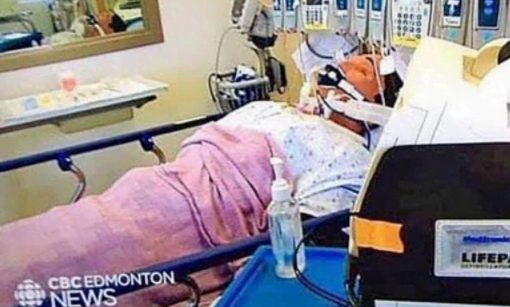(The Post Millennial) – Reuters fact-checked the CBC on its report of how Intensive Care Units (ICU) operate, which featured a mannequin used for other stories aired on the channel. The public broadcaster claimed the contents of an October 2 report did not film inside an ICU and is not evidence that we should take COVID less seriously.
The report documented interviews and demonstrated a mannequin on differences between typical hospital wards and ICUs. Filmed inside training facilities at the Northern Alberta Institute of Technology (NAIT) and MacEwan University for the report on COVID projections in Alberta, the CBC dejected claims by online users that using the mannequin was proof the province’s ICU facilities were not as busy as advertised.
A Twitter user said, “It’s called fraud, but because it’s the media, they get a pass. Look very closely.” But the CBC clarified they used the mannequin to demonstrate how equipment in an ICU works and is not proof that undermines the pandemic threat. The full report is viewable on the CBC website, Twitter and Facebook page. They also featured footage of the mannequin in a news report on October 7.
The article’s headline reads: “It’s real. It’s dangerous’: What it’s like in an ICU ward”. The description of the clip reads: “Respiratory therapist Crystal Grette and Christy Raymond, dean of the faculty of nursing at MacEwan University, explain what makes an ICU bed and ward different, and what patients should expect if they end up in one.”
CBC Edmonton released an update on its website Monday, clarifying that featuring a mannequin in the report was filmed at a university, not inside a busy hospital ICU. “Some of the images in this video are from inside hospitals and as such are identified as being provided by [Alberta Health Service]. The other clinical footage, including video of mannequins in beds, was recorded by CBC Edmonton in September 2021 at training facilities at the Northern Alberta Institute of Technology and MacEwan University, where students learn using realistic hospital simulations.”
The Facebook video description states the report explained how ICU facilities operate: “With so much focus on Alberta’s available ICU beds, we spoke with two experts about what actually MAKES an ICU bed different and what patients can expect when they get moved to an intensive care ward.”
In a statement to Reuters, a CBC spokesperson said: “On October 1st and 2nd, CBC Edmonton ran two stories describing the realities of being in an ICU ward and the strain on nursing staff. Unable to bring our cameras into a hospital ICU ward, we shot footage at two training facilities which were then used for illustrative purposes.”
They added: “In the October 1 story, which was then posted to our website here, it was not clearly identified as training footage, and it should have been. We have since clarified that.”
“Regrettably, some of this same footage was used again in a different story about COVID projections for Alberta that aired on October 7 during our 6 and 11 pm newscasts,” continued the CBC, who apologized for the inappropriate use of the mannequin for illustrative purposes.
Reuters fact-checkers said the CBC was missing context because the public broadcaster failed to mention that filming took place at NAIT and MacEwan University. They said using a mannequin in news reports aired on CBC Edmonton is not proof not to take COVID seriously, despite using the mannequin to demonstrate how an ICU operates and said footage featured in an October 7 news report.
thepostmillennial.com/cbc-apologizes-icu-photo-mannequin
source: NowLiberty.com





Leave a Reply